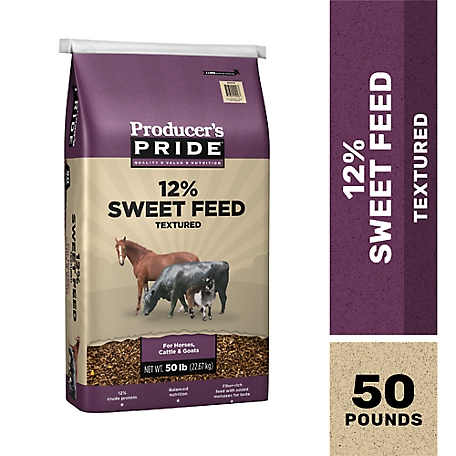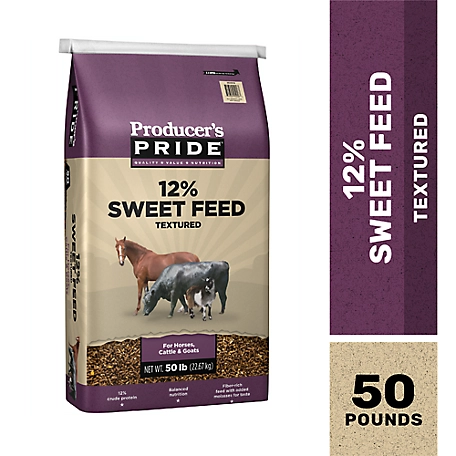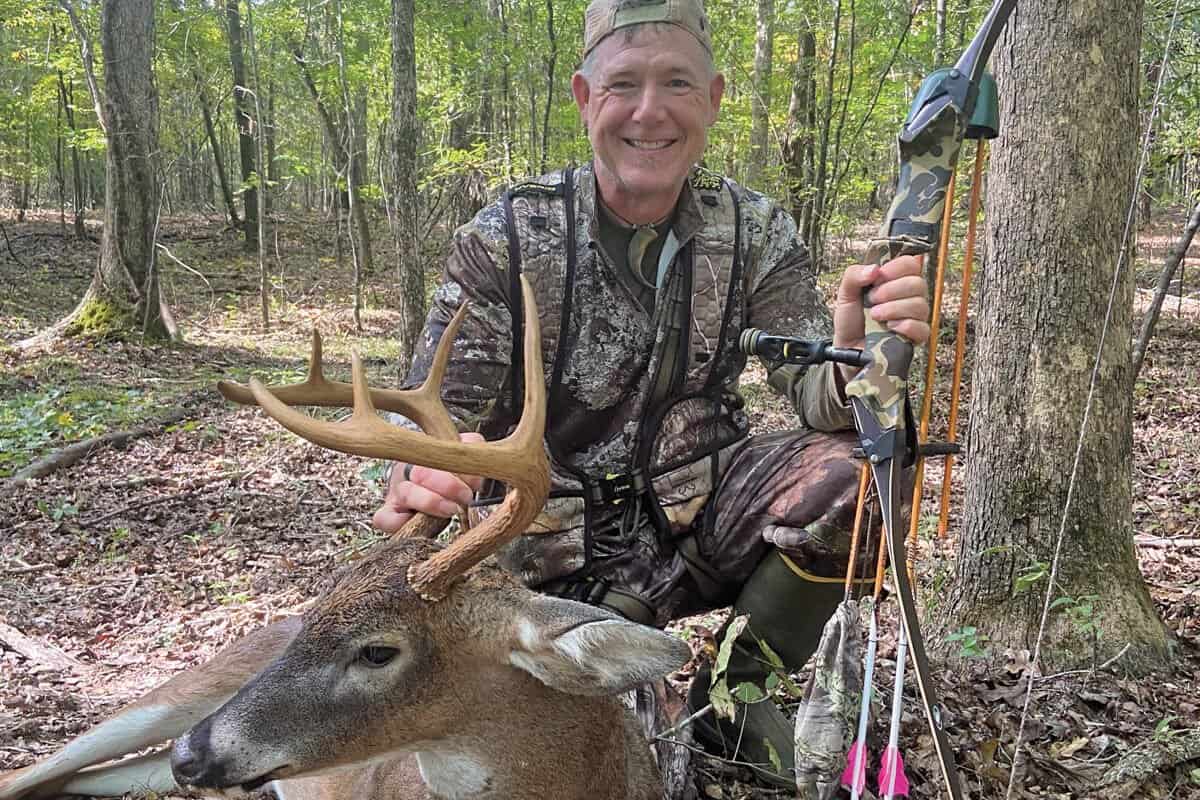Deer will eat sweet feed if it is available to them. This feed is not part of their natural diet, but they find it palatable.
Sweet feed, a blend of grains, molasses, and other additives, is irresistible to many farm animals and wildlife, including deer. Typically intended for livestock such as horses and cattle, gardeners and homeowners may find that these feeds also attract deer to their property.
While deer are naturally browsers who prefer leaves, twigs, and fruits, they adapt quickly to easy-to-access, high-carbohydrate foods. Offering sweet feed to deer might be tempting, but it is essential to consider the dietary needs and the potential health risks to deer, as well as the legal implications in some regions regarding feeding wildlife. Responsible feeding practices are crucial to ensure that encounters between humans and deer remain safe and do not disrupt the animals’ natural foraging habits.

Credit: www.tractorsupply.com
Deer Dietary Habits
Deer dietary habits are both fascinating and multifaceted. Wild deer are complex feeders. They adjust their diet according to what’s available. Their food choices often depend on the season. This change ensures they get enough nutrients all year. Let’s explore the kinds of natural foods deer prefer and how their eating patterns change with the seasons.
Natural Food Sources
Deer find most of their food in the wild. They eat plants like grass, leaves, and twigs. In some cases, deer might even eat fruits and nuts. They have a diet that changes through the year. This diet relies heavily on what’s growing at the time.
- Broadleaf weeds
- Herbaceous plants
- Shoots from woody plants
- Fruits such as apples and berries
- Acorns and nuts, a fall favorite
Seasonal Feeding Patterns
Deer change their diet with the seasons. They do this to meet their nutritional needs. In spring and summer, they eat more herbs and leaves. These foods are soft and easy to digest. They give plenty of nutrients.
When fall comes, deer eat more nuts and fruits. These foods are rich in energy. This helps deer build fat reserves for winter. In winter, they eat less because food is scarce. They must survive on stored fat and whatever they find.
| Season | Main Food Source |
|---|---|
| Spring/Summer | New plant growth, flowers, soft greenery |
| Fall | Acorns, fruits, nuts |
| Winter | Woody plant shoots, bark, evergreen plants |

Credit: madbarn.com
What Is Sweet Feed?
Sweet feed is a type of animal feed. It is a mix of grains and other ingredients. It smells sweet. Farmers give it to many types of farm animals. People often wonder if deer will eat it too. We will explore what makes up sweet feed.
Ingredients In Sweet Feed
Sweet feed includes different things. These are grains, molasses, and more. We list them below:
- Grains: Corn, oats, and barley are common.
- Molasses: This gives the sweet smell and taste.
- Supplements: Minerals and vitamins for animal health.
This feed can look different. Some have more corn. Others have different grains. But they all smell sweet.
Sweet Feed In Animal Diets
Sweet feed is part of many animal diets. This includes horses, goats, and cows. The sweet taste makes it yummy for them. It gives energy. It also has things they need to stay healthy. But what about deer?
| Animal | Use of Sweet Feed |
|---|---|
| Horses | For energy and endurance. |
| Goats | To help with milk production. |
| Cows | Used for growth and lactation. |
Deer may find sweet feed tasty too. But it’s not always good for them. We should feed deer the right food. Next, we’ll see if deer eat sweet feed and if it’s safe.
Attraction To Sweetness
Deer are drawn to certain tastes just like we are. Their foraging habits often lead them towards foods with a touch of sweetness. This is where the term “sweet feed” comes into play. Such feed, often used for livestock, catches the attention of deer. They seek out these flavors in their natural diet as well.
Sweet Feed And Deer Preferences
Deer have varying preferences, much like any other animal. Sweet feed contains ingredients like corn, oats, and molasses. These add a favorable taste that deer enjoy. It’s common for deer to be attracted to this combination. It resembles the natural sweetness found in ripe fruit or tender shoots they naturally prefer.
- Corn: High in carbohydrates, it supplies energy.
- Oats: Provide fiber and nutrients.
- Molasses: Adds a bold, sweet flavor that deer love.
Deer often seek out sweet tastes. Sweet feed, therefore, stands out in areas where deer have plenty of options.
The Role Of Sugar In Deer’s Diet
Sugar plays a role in providing quick energy for deer. In a natural setting, deer consume sugar through fruits, natural grains, and other plants. This is particularly true in the fall when they bulk up for winter.
| Energy Source | Examples | Importance in Diet |
|---|---|---|
| Fruits | Apples, Berries | Quick sugars for energy |
| Natural Grains | Acorns, Nuts | Slow-digesting for sustained energy |
| Plants | Clover, Alfalfa | Vitamins and Minerals |
In summary, sugar acts as a quick energy source for deer. They gravitate to this taste naturally. Sweet feed offers a concentrated source of this preference, making it a significant part of their diet when available.
Nutritional Impacts
Deer often gravitate towards sweet feed because of its appealing taste. Understanding the nutritional value is crucial. Let’s explore the benefits and risks tied to sweet feed as a dietary choice for deer.
Beneficial Nutrients In Sweet Feed
Sweet feed packs a mix of nutrients that can be beneficial for deer:
- Energy: Carbohydrates in grains fuel daily activities.
- Protein: Helps with muscle growth and repairs.
- Fiber: Aids in healthy digestion.
- Vitamins and Minerals: Essential for overall health.
Sweet feed may include corn, oats, barley, and molasses. These can support a deer’s nutrient requirements, especially in areas with limited forage.
Risks Of Overfeeding Sweet Feed
While sweet feed can be beneficial, it’s important to consider the risks:
| Risks | Details |
|---|---|
| Digestive Upset | Too much grain can disturb a deer’s stomach balance. |
| Obesity | Excess calories from grains can lead to unhealthy weight gain. |
| Nutrient Imbalance | Can interfere with the absorption of other essential nutrients. |
| Deer Attractant | May lead to overpopulation in one area, stressing the environment. |
Feeding deer should be done with caution. Wildlife professionals recommend natural food plots over supplemental feeding to maintain a healthy deer population.
Feeding Strategies
Many people wonder about the right way to feed deer. If you have sweet feed, you might ask, “Will deer eat it?” Yes, they will! Yet, it’s critical to feed deer correctly. Let’s dive into some feeding strategies to keep these graceful creatures healthy.
Best Practices For Feeding Deer
Keeping deer safe starts with how you feed them. Your goal should be to offer food that mimics their natural diet. Here are some tips:
- Monitor Quantities: Give small amounts to prevent dependence.
- Proper Placement: Set up feeders away from roads to avoid accidents.
- Keep it Clean: Regularly clean feeders to prevent disease.
- Seasonal Feeding: Adjust what you offer based on the time of year.
Alternatives To Sweet Feed
While deer may enjoy sweet feed, it’s not the best for their health. Consider these alternative food sources:
| Food Type | Benefits |
|---|---|
| Native Plants | Offers natural nutrients deer need. |
| Commercial Deer Pellets | Formulated to provide a balanced diet. |
| Fruits and Vegetables | Gives a variety of vitamins and minerals. |
| Forage Crops | Encourages natural grazing behavior. |
By focusing on these feeding strategies, we ensure that deer receive the nutrition they require without disrupting their natural habits.

Credit: www.amazon.com
Conservation And Ethical Considerations
Conservation and Ethical Considerations surround the question of whether deer should be fed sweet feed. Sweet feed, a mix of grains, molasses, and supplements, often attracts deer, but it’s vital to understand the broader implications. How does this practice affect deer populations and their habitat? Acknowledging these concerns is crucial for responsible wildlife stewardship. Let’s dive into the impact on local ecosystems and legalities guiding feeding.
Impact On Local Ecosystems
Providing deer with sweet feed can disrupt natural behaviors and diet. Such interventions may lead to:
- Overpopulation: Abundant food sources can increase reproduction rates.
- Dependency: Deer may become reliant on artificial food sources.
- Spread of Disease: High deer concentrations can facilitate disease transmission.
- Habitat Damage: Overcrowding may cause habitat degradation.
It’s imperative to consider these factors to maintain balance within ecosystems.
Legalities And Guidelines
Laws regarding wildlife feeding vary by region. Check state and local regulations before acting. Key points often include:
| Region | Laws | Consequences |
|---|---|---|
| State Parks | Feeding prohibited | Fines or penalties |
| Wildlife Refuges | Special permissions required | Restrictions on activity |
| Private Land | Owner discretion within laws | Varying based on local ordinances |
Responsible wildlife interaction respects legal boundaries and prioritizes the wellbeing of the ecosystem. Always proceed with caution and knowledge.
Frequently Asked Questions For Will Deer Eat Sweet Feed
Do Deer Like Eating Sweet Feed?
Yes, deer are attracted to sweet feed due to its high sugar content. The combination of grains, molasses, and added nutrients present in sweet feed makes it very appealing to deer. It is often used by hunters and wildlife enthusiasts to bait deer.
Can Sweet Feed Harm Deer?
While deer may enjoy sweet feed, it’s not ideal for their diet. Regular consumption can disrupt their digestive system and lead to health issues. It’s formulated for livestock and doesn’t meet the complex nutritional needs of deer. Natural forage is preferable for their well-being.
How Often Should Deer Be Fed Sweet Feed?
Feeding deer sweet feed should be done sparingly, if at all. It’s better as an occasional treat rather than a staple diet. Overfeeding can cause dependency and disrupt natural foraging habits, potentially leading to negative impacts on the deer’s health and ecosystem balance.
What Components Of Sweet Feed Attract Deer?
Sweet feed primarily attracts deer with its sugar-rich molasses content. Additionally, the grains such as corn and oats present in sweet feed provide a carbohydrate source that deer find enticing, especially during times when natural food sources are scarce.
Conclusion
To wrap up, deer do have a taste for sweet feed. It can lure them into yards, but caution is advised. Balancing their diet with natural forage is essential. Consult wildlife experts for responsible feeding. Remember, moderation is key to avoid health issues in deer populations.


